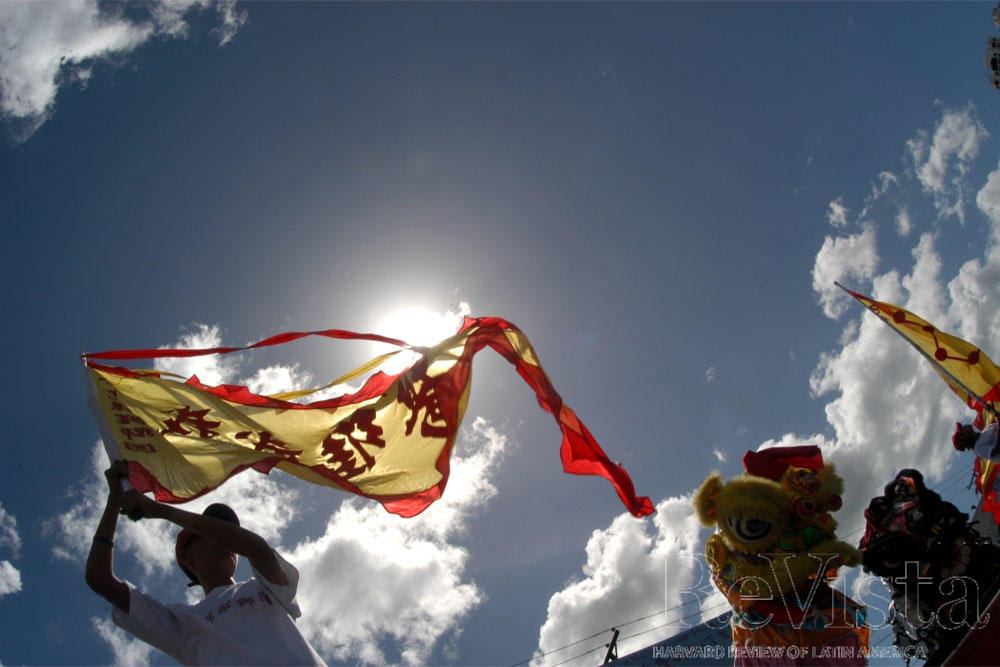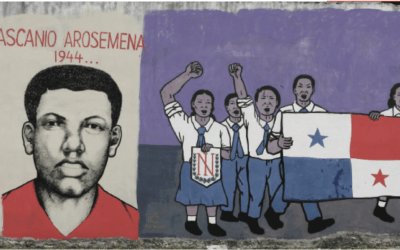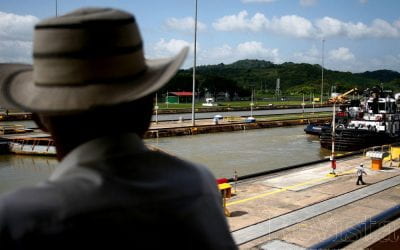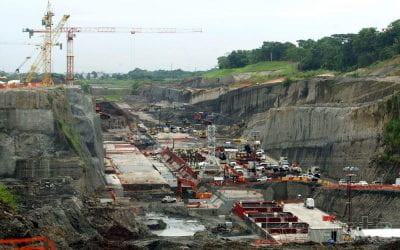The Chinese of Panamá Also Have a Story to Tell…
Panamá’s Chinese immigrants arrived 159 years ago after a hellish journey from their homeland. Hired by the Panama Railroad Company, the company in charge of the construction of the railway that would link, for the first time, the Atlantic and the Pacific Oceans, the group of 705 Chinese arrived aboard the “Sea Witch” of the Holland and Aspinwall line on March 30, 1854. Sailing from Shantou (China), 11 passengers had died during the 61-day trip. These ships were called “floating hells” because of the inhumane conditions of the journey. Later, many of these workers died of tropical diseases and various committed suicide, but the few Chinese who survived made up a solid group that marked the beginning of a migratory flow which would be uninterrupted throughout our history as a nation.
The story of this first group of Chinese workers has been studied in detail. Panamanian, U.S. and Latin American historians have looked into the large number of suicides among the Chinese laborers that alarmed the directors of the Railway Company as much as the Panamanian community in general. Environmental causes such as tropical diseases (malaria, yellow fever) sometimes led to despair. However, miserable living conditions, the inability to communicate in their own language, the radical change in the customs and meals, as well as the lack of opium, fostered an attitude prone to depression and suicide. Historical studies show that when the directors of the Railway Company in New York learned about the cost of the opium distributed daily to the Chinese, which had been promised in their contracts, they abruptly suspended the supply, worsening the emotional situation of these immigrants. Similar self-destructive circumstances have been described in Chinese communities in Peru’s Chincha Islands, where guano was mined, and in Cuba’s sugar plantations.
The first Chinese immigrants became a sui generis class of workers. Many of them were consigned at the ports and enticed by misleading promises; others wanted to escape their situation of poverty and social marginalization at home. Among them were individuals with gambling debts or addiction to opium. Few knew for sure the place and the work that awaited them in foreign lands. However, all came from a much more developed society and from a civilization with knowledge transmitted from generation to generation. These factors guaranteed a good working performance and the possibility of upward labor mobility, compared to the performance of blacks brought to the Antilles. As recorded in their hiring and payroll records, the Railway Company paid $109.00 to labor recruiters for each Chinese brought to Panamá.
Men came alone. Some of their contracts expressly prohibited them from bringing their families, but as soon as they managed to save enough money, they would indeed bring the wife, children and other relatives. It often happened that immigrants formed a new family in Panamá and kept the other one in China; and in some cases the Chinese family emigrated and lived with the new Panamanian family, wives included.
Of the Chinese who survived the subhuman conditions in which they worked for the Trans-Isthmian Railroad, many were exchanged for black Jamaicans, and $17.77 was paid for each Chinese man brought to work on the sugar plantations of Jamaica. As many as 197 Chinese were exchanged at this rate; the remaining few stayed in the country. However, this small group began working as shift laborers or in service activities so successfully that the future Republic of Panamá decided to enact laws of exclusion and immigration restrictions against the Chinese, some of which are still in force. Today’s convoluted immigration laws, which restrict immigration from the People’s Republic of China (as well as several other countries ranging from Cuba to the United Arab Emirates), only encourage human trafficking. Immigrants from Taiwan, on the other hand, have easy access to permanent residence because of diplomatic treaties.
The waves of Chinese migration corresponded to large construction projects that were carried out in the Isthmus of Panamá during the last two centuries, such as the Trans-Isthmian Railroad and the French and American Canal. World War II also attracted a large number of immigrants to our country, since it was an obligatory transit point for troops and warships going from one front to the other, and also because of the accompanying economic boom.
The post-World War II Chinese community lived principally in the port cities of Panamá and Colón, many going into business or activities within the Panama Canal, while others became accountants, doctors, engineers or engaged in services such as grocery stores, restaurants and laundry shops. The process of assimilation was facilitated through mixed marriages, the adoption of Christianity, and active participation in the educational, social and political activities of the country.
Despite their concentration in these cities, the Chinese were not limited geographically. In a country as small as ours, with barely 30,000 square miles, the Chinese have been moving all over it since the last century, from the Darién jungle to our border with Costa Rica. Already in 1876 a French engineer, Armand Reclus, found in the Darién province Chinese mixed with runaway African slaves, native Indians and white people.
The relative acceptance of the Chinese by the lower classes in Panamá and measures by the Panamanian government against these immigrants promoted mixed marriages, and assimilation was speeded up; in addition, many needed “marriages of convenience” as a way of solving immigration problems. In 1941, during the presidency of Arnulfo Arias, businesses of Chinese residents who were not nationalized were confiscated. Many Chinese got married then and/or transferred their businesses to their wives or children who were born into the Panamanian nationality, obtained either through jus soli or jus sanguinis, that is, the law of the place of birth or the right of blood, i.e. descent.
As the Chinese left Chinatown, located in the area next to the Public Market in the Old Quarter of Panama City, they began forgetting their language and customs. However, Chinese of the first and second generations formed Beneficence Associations according to their district of origin in China, and tried hard not to lose their cultural ties, just as they began to lose their ethnographic or ethnological ties. Confucian precepts such as the importance of education, respect for the family hierarchy and filial love remain valid among Chinese descendants without their really being aware that these are and were traditional values of the Chinese transmitted unconsciously through identification with their parents and ancestors.
Those who have studied Chinese immigration to Panamá have noted that the circumstances and the social and political problems these immigrants face have been unchanged since 1904.
Today, although the Chinese in Panamá have kept their political allegiances, whether to the Taiwanese nationalist government or to the political order of the People’s Republic of China, they generally do not air their political conflicts publicly. There are newspapers of both ideological orientations, as well as known groups for either affiliation. The Republic of Panamá is one of the few nations to hold diplomatic relations with the Republic of China (Taiwan), while at the same time maintaining an Office of Trade Relations with the People’s Republic of China (PRC). Both nations have strong commercial ties with Panamá; the PRC being the second user of the Panama Canal, while the two main ports of Panamá are handled by Chinese-funded enterprises: Evergreen (Taiwan) in the Atlantic Ocean at Colón, and Hutchinson-Whampoa (PRC) in the Pacific Ocean, at Balboa.
To say that the Chinese immigrants have succeeded in integrating into the Panamanian community does not mean that they have done so easily, or without any effort or unpleasantness. This process demands an enormous psychological effort, which has a price.The psychological transformations that take place include denial, suppression and repression of some basic feelings. As every immigrant in this world, the Chinese individual tends to eliminate nostalgia for the homeland, for the family and friends left behind. This repression must take place to avoid feelings of melancholy that would endanger their adaptive process. Sometimes people seem to be extremely tolerant and patient in face of the aggressiveness of the surrounding medium, by suppressing anger or envy.
However, for new immigrants who decide to adopt this country as their new home, the process of integration, particularly for their children, will be made easier by institutions such as the Chinese-Panamanian Cultural Center. There, they will be able to gain an education while becoming familiar with the Panamanian culture and integrate without having to give up their language, traditions and customs.
And so the story of the Chinese in Panamá is one that will continue to have new and exciting chapters. The challenges that lay ahead may be familiar or unknown, but historians will continue to follow and document these transitions of the generations to arrive.
Spring 2013, Volume XII, Number 3
Ramón A. Mon is a clinical psychologist and psychoanalyst. He earned a Master of Oriental Studies of El Colegio de Mexico and has worked, from a clinical perspective, on immigration conflicts especially of Chinese in Latin America. Contact: ramon0643@gmail.com
Related Articles
A Tale of Two Flags
A Tale of Two Flags The Last Hurdle When in 1995 President Ernesto Pérez Balladares appointed me to head the commission responsible for the transition of the Panama Canal from U.S. to Panamanian hands, it never crossed my mind that yet another negotiation—unexpected...
Who Remembers Panamá?
There was a time, many decades ago, when the Isthmian country of Panamá—dividing the Americas—made near daily headlines from Canada to Argentina…
The Story That Panamá Decided to Write
A few days prior to the date set for the transfer of the Panama Canal from the United States to Panamá, a reporter from a U.S. news network asked me, “Mr…





